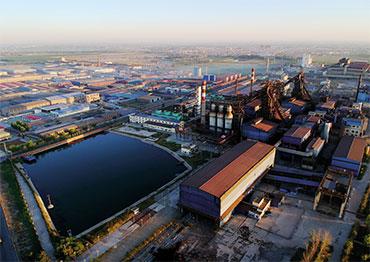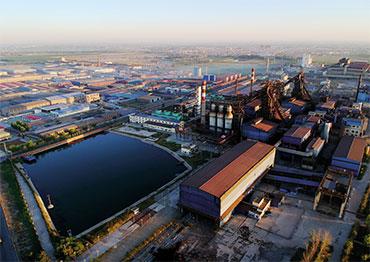Bazhou officials are urgently looking for a new pillar industry to replace steel after provincial authorities ordered it to shut its two steel plants in 2017 to comply with emissions restrictions. Previously, Bazhou’s PM2.5 index often exceeded 500, a sign of very serious particulate pollution and poor air quality.
“At its peak, Qianjin [steel plant] paid 600-700 million yuan (US$88.2m-102.9m) in taxes annually, an amount that even 100 new enterprises couldn’t cover,” the Bazhou government insider said.
According to the insider, Hebei demanded that all steel plants close in the city of Langfang, where Bazhou County is located, by the end of 2019. Bazhou complied in 2017, the first county in Langfang to do so.
“If the two plants had closed two years later, the government would have had at least 2 billion yuan (US$294.1m) more in tax revenue and would not have been caught in the current financial crisis,” the insider said.
“The government was definitely reluctant to shut down the plants, but it was an order,” a town-level official in Bazhou, also requesting anonymity, told NewsChina.
“Bazhou’s steel industry did not suffer from overcapacity. In fact, steel was often in short supply,” a Bazhou steel industry insider told NewsChina. “Running at full capacity, the two plants produced nine million tons of steel each year, but Bazhou’s annual total steel consumption was 20 million tons. You’d often see trucks delivering factory-fresh steel to local businesses that make steel tubes and pipes.” Bazhou is home to around 70 percent of the country’s total metal and glass furniture factories, the industry insider said.
The plant closures hit the local furniture industry as well, since they had to ship steel in at higher prices. “Closing the steel mills means closing many other businesses in the industrial chain, which led to many losing their jobs. It was really not easy for the government to subtract that steel capacity without causing social unrest,” the town official said.
Although local furniture enterprises, according to the town official, did not leave Bazhou following the plant closures immediately, the increased operation costs ate into profits.
“The two steel plants spurred a complete steel industrial chain in Bazhou that helped create low value-added enterprises downstream. Without the steel plants, we can’t cut those low value-added enterprises easily, but rather have to upgrade them through mergers and acquisitions,” he said.
The government is trying to bring in new industries like food processing, which came to Bazhou with aid from CFLD. But few come close to generating the tax revenue that steel did.
“Before the 2017 shutdowns, Qianjin plant made 8 million yuan (US$1.3m) in profit each day,” the insider with Bazhou government connections said.
The approval process for provincial-level key projects takes at least three years, the insider said, making it even more of a challenge for Bazhou to fill the void of its steel plants.
“Bazhou needs more time,” he said.
Despite the tightened real estate restrictions, Bazhou hopes Xiong’an New Area will bring more opportunities. According to State Council plans approved in 2019, Xiong’an New Area is to take over Beijing’s sectors beyond political functions to help the capital become a cultural, international exchange and technological innovation center.
If traditional State-owned enterprises (SOE) relocate to Xiong’an as expected, Bazhou officials hope the county will attract more residents, talent and branches of SOEs.
“As a satellite area, we should actively integrate ourselves into the capital’s development,” read Bazhou government’s industrial plan included in its 14th Five-Year Plan (2021-2025) released on November 30, 2021. “This is what the synergetic development of Beijing, Tianjin and Hebei requires, and Bazhou has to face reality,” it read.

 Old Version
Old Version
